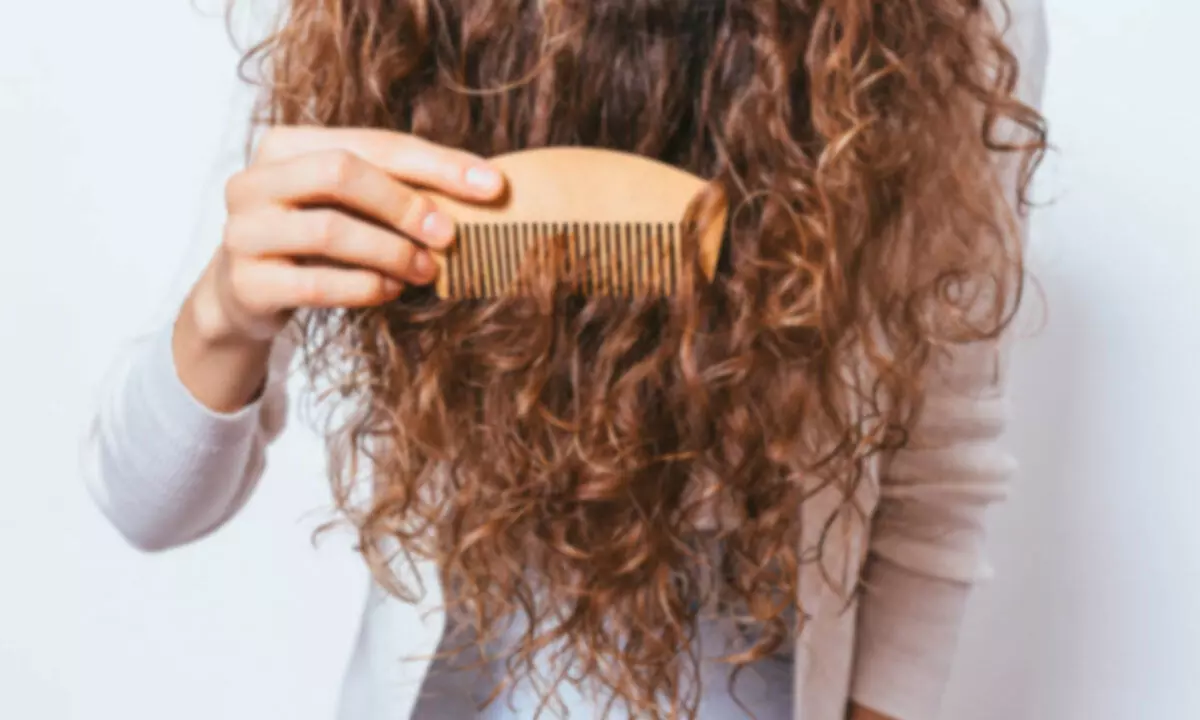Entertainment
Mastering the Art of Detangling Long Hair Without Damage

Managing long hair can often feel like a daily struggle, especially when faced with tangles caused by elements such as wind or post-shower drying. Fortunately, detangling can be a painless process with the right techniques and tools. By employing gentle methods, individuals can effectively tackle knots without suffering from breakage or hair loss.
Effective Techniques for Detangling
One of the first recommendations from hair care experts is to swap out a regular brush for a wide-tooth comb. Traditional brushes can be harsh on tangled strands, leading to unnecessary damage. The wide-tooth design allows for smoother detangling, enabling users to start from the ends of their hair and gradually work upwards. It is crucial to take this process slowly, as rushing can lead to significant hair loss.
Preparation is also key when it comes to detangling. Applying a leave-in conditioner or detangling spray to damp hair can provide the necessary slip to ease out knots. After towel-drying gently, focus on applying the product to the mid-lengths and ends, allowing it to sit for approximately half a minute before beginning the combing process. For those looking for a DIY solution, mixing conditioner with water in a spray bottle can create an effective detangler.
Additional Tips for Pain-Free Detangling
When confronted with stubborn tangles, starting with fingers can be more effective than using a comb right away. Using fingers to gently separate the hair allows for greater control and minimizes damage. A small amount of oil, such as argan oil, or a leave-in conditioner can enhance the process by providing extra slip. Although this method may take longer, it helps identify the worst knots for targeted detangling.
It is important never to attempt detangling hair that is completely dry. Frizzy hair is more susceptible to breakage, so lightly misting hair with a mixture of water and a few drops of conditioner can facilitate a smoother experience. The added moisture reduces friction, making it easier to detangle without causing stress to the hair.
Another preventive measure is to braid hair before bedtime. Loose hair can easily tangle while tossing and turning during sleep. By securing hair in a braid or a loose bun, individuals can significantly reduce the chances of waking up to a tangled mess. Additionally, sleeping on a silk pillowcase can minimize friction, preventing knots and split ends while keeping hair soft.
Detangling long hair need not be a dreaded chore. With the right tools, techniques, and nighttime routines, individuals can protect their hair and enjoy smooth, knot-free mornings. A little patience and care can go a long way in maintaining healthy and beautiful long locks.
-

 World5 months ago
World5 months agoSBI Announces QIP Floor Price at ₹811.05 Per Share
-

 Lifestyle5 months ago
Lifestyle5 months agoCept Unveils ₹3.1 Crore Urban Mobility Plan for Sustainable Growth
-

 Science4 months ago
Science4 months agoNew Blood Group Discovered in South Indian Woman at Rotary Centre
-

 World5 months ago
World5 months agoTorrential Rains Cause Flash Flooding in New York and New Jersey
-

 Top Stories5 months ago
Top Stories5 months agoKonkani Cultural Organisation to Host Pearl Jubilee in Abu Dhabi
-

 Sports4 months ago
Sports4 months agoBroad Advocates for Bowling Change Ahead of Final Test Against India
-

 Science5 months ago
Science5 months agoNothing Headphone 1 Review: A Bold Contender in Audio Design
-

 Top Stories5 months ago
Top Stories5 months agoAir India Crash Investigation Highlights Boeing Fuel Switch Concerns
-

 Business5 months ago
Business5 months agoIndian Stock Market Rebounds: Sensex and Nifty Rise After Four-Day Decline
-

 Sports4 months ago
Sports4 months agoCristian Totti Retires at 19: Pressure of Fame Takes Toll
-

 Politics5 months ago
Politics5 months agoAbandoned Doberman Finds New Home After Journey to Prague
-

 Top Stories5 months ago
Top Stories5 months agoPatna Bank Manager Abhishek Varun Found Dead in Well









